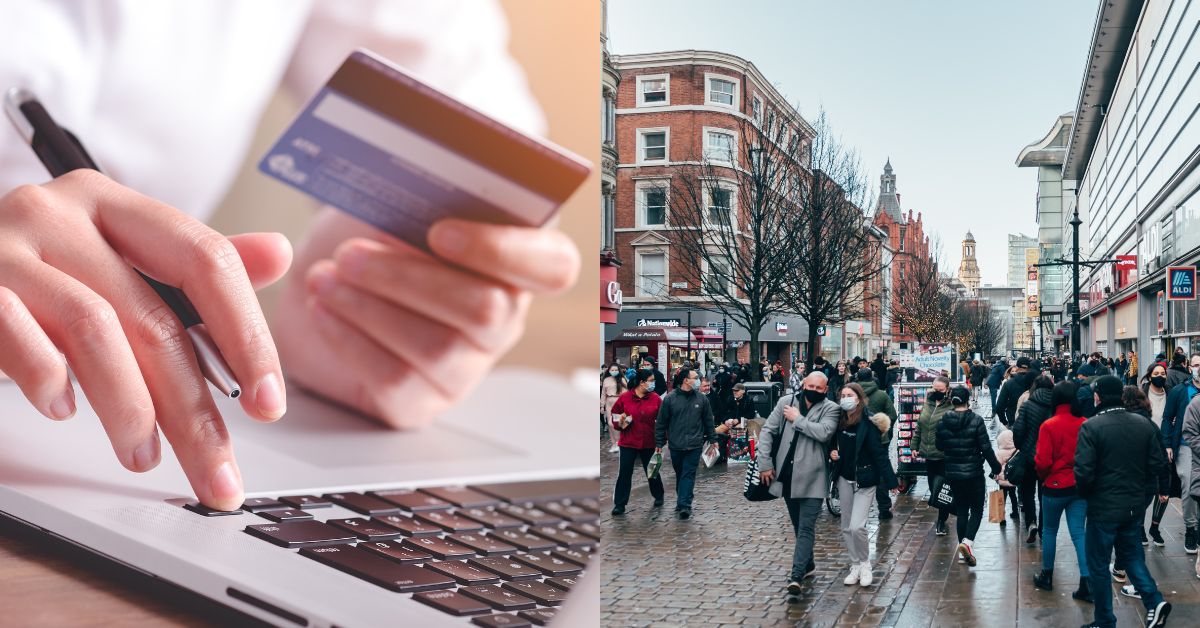largely remain.
The ‘lockdown effect’: an increase in online shopping across the board
Online shopping was already on an upward trend in the two decades before the pandemic, driven by the expansion of internet access and the rise of e-retailers like Amazon. By the end of 2019, across UK cities, 30 pence in every pound was spent online.
This massively accelerated at the start of 2020 as restrictions came into force and offline spend levels plummeted. Between February and June 2020, internet sales as a percentage of total retail sales across UK cities rose from 30 to 42 per cent, peaking at half of all spend in January 2021 at the start of the second lockdown.
Online spend levels have since remained high, a sign of stickiness of behaviours as people became more acquainted with it.
By December 2022, online spend was higher than its pre-Covid levels across all 62 cities

Source: Beauclair 2021
The increase in online share has been larger for sectors that were traditionally less exposed to it
Although online share increased five percentage points between 2019 (Q3) and 2022 (Q3), long-term trend lines show this is not far off what it would have been had the pandemic never happened.
Two separate patterns are at play:
The first is between cities, with cities in the Greater South-East seeing particularly high growth in online share.
The second is between sectors: online share more than doubled for food and drinks, while the rise in sectors that already had a high online presence in 2019 has been more muted.
Food and Drinks have seen their online share rise the most since 2019


Source: Beauclair, 2023.
Is the rise in internet shopping a threat for British High Streets?
Even before the pandemic, online spending was often perceived as the biggest threat to bricks and mortar retailers. But more online spend doesn’t necessarily mean more empty shops.
Before the pandemic, London and Cambridge were the UK’s online capitals yet had the most vibrant high streets in the country; while cities like Newport and Stoke had a far lower online share but more than one in five units on the high street stood empty.
No relationship seems to exist therefore between levels of online spend and high street activity. Rather, the strength of the high street is determined by other factors such as levels of disposable income and the strength of the local labour market.
What’s true, though, is that online shopping might be changing the nature of high street spending, with sectors like fashion particularly vulnerable. Places will have to adapt, which is only possible if underpinned by sufficient levels of demand.
Rather than worrying too much about the rise in internet shopping, the priority in the country’s most vulnerable places – many of them in the North – should be boosting consumer spending power and addressing the underlying economics behind the lack of demand – by improving the strength of the economy and creating jobs that put money into people’s pockets.




